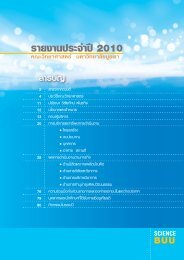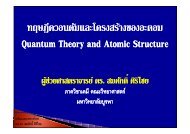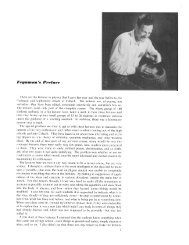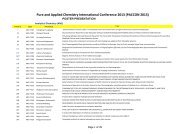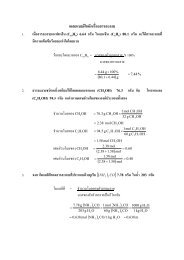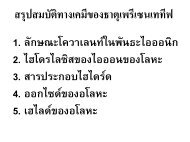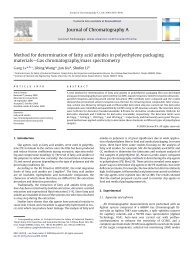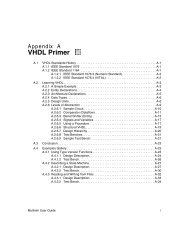USER MANUAL SWAN Cycle III version 40.72A
USER MANUAL SWAN Cycle III version 40.72A
USER MANUAL SWAN Cycle III version 40.72A
You also want an ePaper? Increase the reach of your titles
YUMPU automatically turns print PDFs into web optimized ePapers that Google loves.
Repetitions of keywords and/or other data<br />
Command syntax 97<br />
The use of keywords is sometimes repetitive, e.g. in a sequence of data and keywords<br />
containing many locations in x,y−space. In such a case, the command scheme indicates<br />
this repetitive nature by placing the keywords (and data) concerned between angle brackets<br />
< >. For instance,<br />
KEY1word <br />
In the actual command in the command file the user must give such a sequence. It ends<br />
with either<br />
• end of line<br />
• a keyword other than the ones mentioned in the repetition group<br />
• the character / or ;<br />
If more than one line is required for a command, the user may continue on the next line as<br />
described in Section B.4. The repetition may consist of one instance (in fact, no repetition<br />
at all).<br />
B.2.2<br />
Data<br />
Most commands contain data, either character data or numerical data.<br />
Character data and numerical data<br />
Character data (character strings) are represented in the command schemes by names,<br />
enclosed in quotes (’ ’).<br />
Numerical data are represented in the command schemes by names enclosed in square<br />
brackets ([ ]).<br />
As a rule, an error message will result if numerical data is given where character data<br />
should be given.<br />
Spelling of data<br />
Character data are represented as character strings (sequence of characters and blanks)<br />
between quotes (in the command scheme and in the command file). <strong>SWAN</strong> interprets an<br />
end of line as an end quote (a character data field can therefore never extend over more<br />
than one line).<br />
In a command scheme the character string is always a name (which is placed between<br />
quotes as indicated). In the command file such a name can be entered in two ways:





